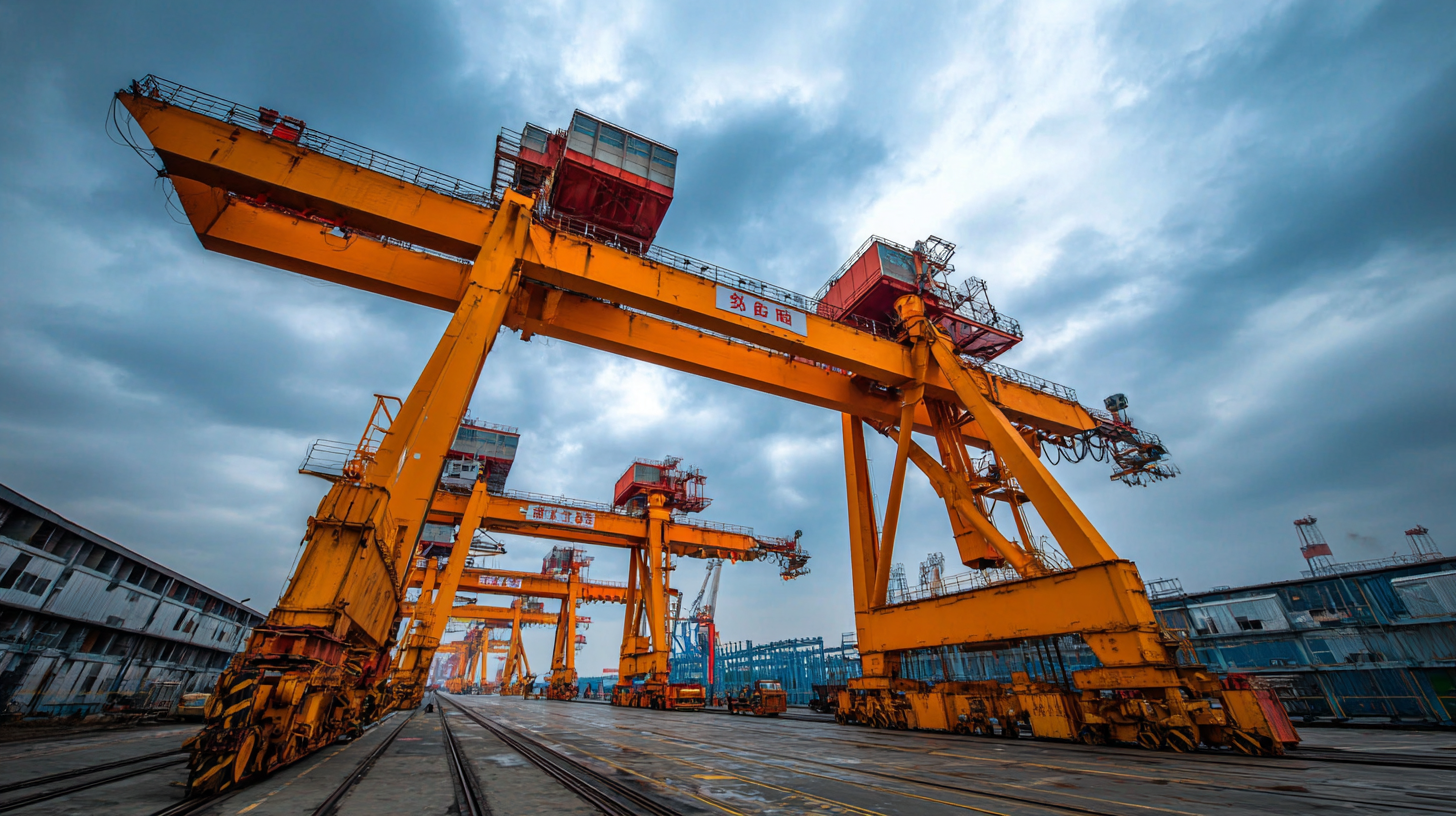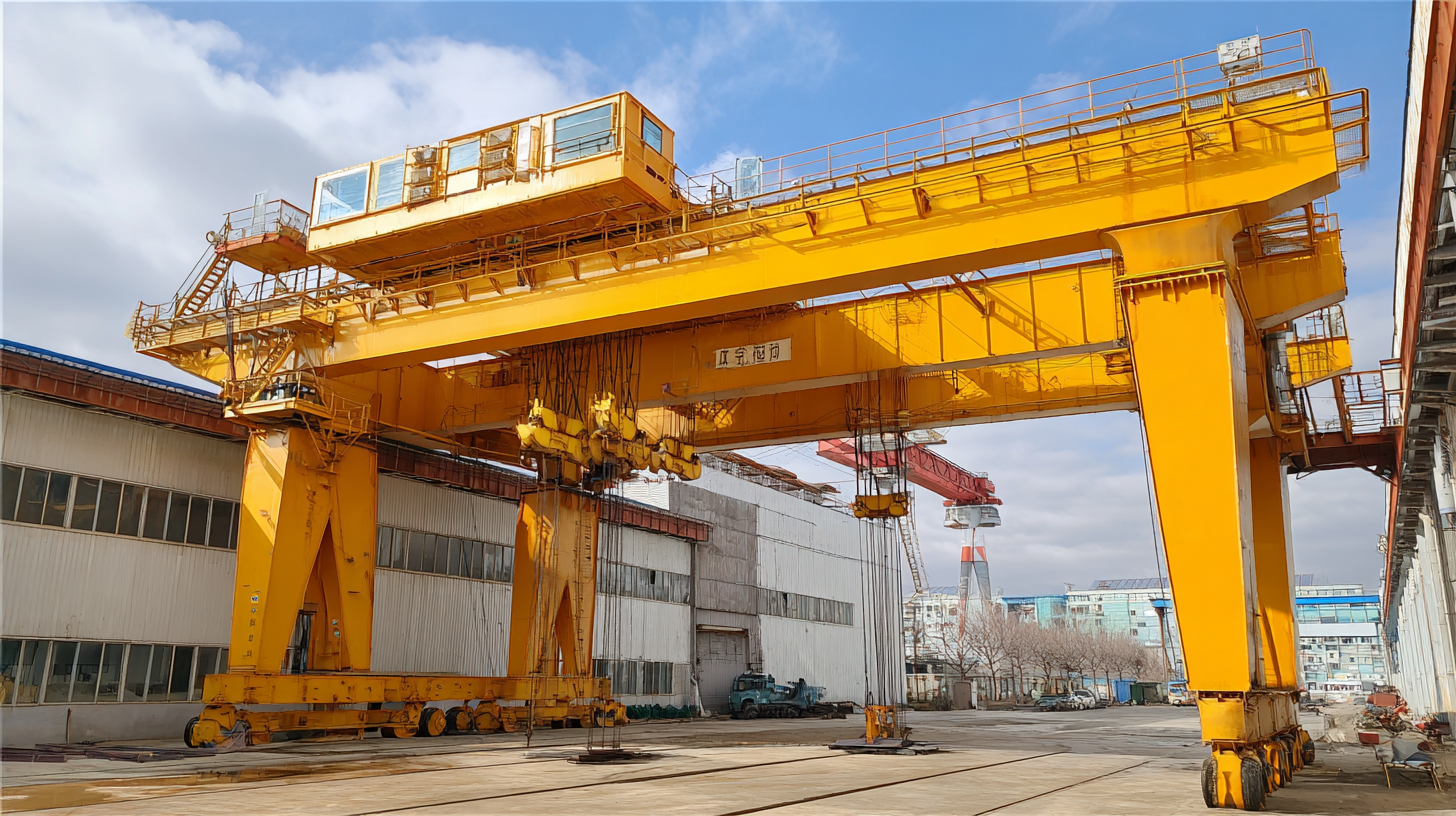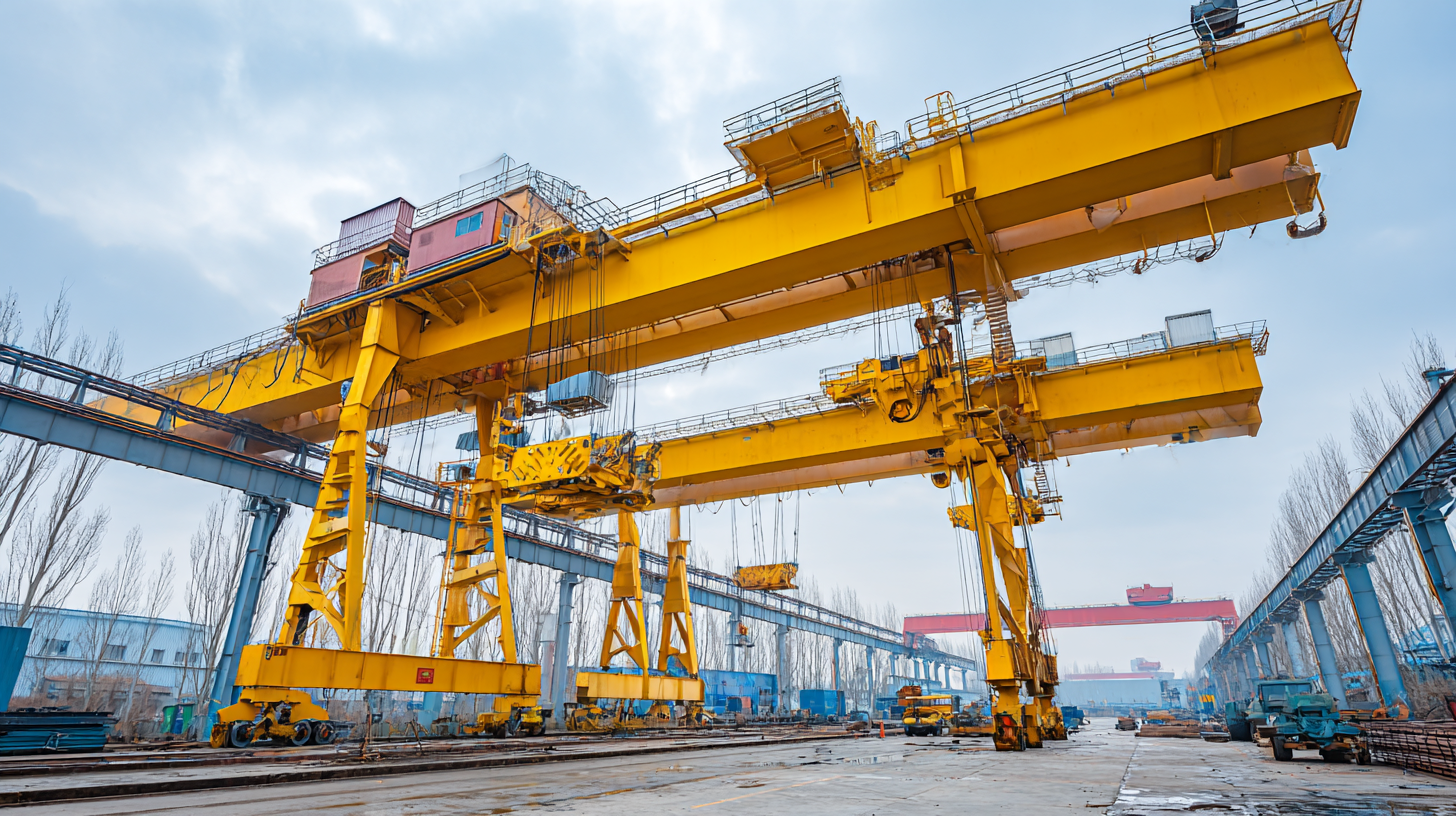Exploring the Unique Features and Applications of the Best Overhead Gantry Cranes: A Comprehensive Guide
 The Overhead Gantry Crane is an essential piece of equipment in various industries, known for its ability to efficiently lift and move heavy loads across manufacturing and construction sites. According to a recent report by Research and Markets, the global overhead crane market is projected to reach $4.38 billion by 2027, growing at a CAGR of 5.1% from 2020 to 2027. This growth is attributed to increasing automation in industrial sectors and the rising demand for advanced lifting technologies. The unique features of overhead gantry cranes—such as their versatile design, high lifting capacities, and ability to operate in limited spaces—make them an indispensable asset for companies aiming to enhance productivity and safety. In this comprehensive guide, we will explore the specific applications, benefits, and innovations associated with the best overhead gantry cranes, providing insights that can aid in selecting the right model for diverse operational needs.
The Overhead Gantry Crane is an essential piece of equipment in various industries, known for its ability to efficiently lift and move heavy loads across manufacturing and construction sites. According to a recent report by Research and Markets, the global overhead crane market is projected to reach $4.38 billion by 2027, growing at a CAGR of 5.1% from 2020 to 2027. This growth is attributed to increasing automation in industrial sectors and the rising demand for advanced lifting technologies. The unique features of overhead gantry cranes—such as their versatile design, high lifting capacities, and ability to operate in limited spaces—make them an indispensable asset for companies aiming to enhance productivity and safety. In this comprehensive guide, we will explore the specific applications, benefits, and innovations associated with the best overhead gantry cranes, providing insights that can aid in selecting the right model for diverse operational needs.
Understanding Overhead Gantry Cranes: Types and Mechanisms
Overhead gantry cranes are essential for various industries, offering unique advantages through their distinct types and mechanisms. These cranes are typically categorized into two main types: single girder and double girder. Single girder cranes are lighter and best suited for lighter loads, making them ideal for smaller operations or warehouses. Conversely, double girder cranes can handle heavier loads with greater stability and are often employed in more demanding industrial settings, such as shipping yards or manufacturing plants.

The mechanisms behind overhead gantry cranes also contribute to their efficiency and versatility. Most models utilize a hoisting mechanism that can be customized for specific lifting needs, whether it involves electric hoists or manual systems. The lateral movement is facilitated by wheels that run along a track, allowing for easy maneuverability. This design not only enhances safety but also maximizes productivity by streamlining the handling processes of heavy materials. Understanding these types and mechanisms is crucial for selecting the right overhead gantry crane tailored to your operational requirements.
Key Features of the Best Overhead Gantry Cranes: What Sets Them Apart
When it comes to overhead gantry cranes, several unique features set the best models apart from the rest. Firstly, their modular design allows for easy customization, enabling users to adjust the crane’s dimensions and lifting capacity according to specific project requirements. This flexibility is particularly beneficial in industries like construction and manufacturing, where varying loads and workspace constraints are common.
Another critical feature is their advanced safety mechanisms, which include overload protection systems and emergency stop functions. These enhancements not only mitigate risks but also improve operational efficiency by ensuring that cranes can handle heavy loads safely. Additionally, many top models incorporate smart technology, such as remote control operation and real-time load monitoring, allowing operators to manage their lifting tasks with precision and ease. These innovations boost productivity while maintaining high safety standards, making them indispensable tools in modern industrial applications.
Applications of Overhead Gantry Cranes in Various Industries
Overhead gantry cranes are indispensable in various industries, serving multiple applications that enhance operational efficiency and safety. In the construction sector, these cranes are often employed for lifting heavy materials, such as steel beams and concrete blocks, facilitating a streamlined workflow. With their ability to move loads horizontally over a specified area, they reduce the need for manual labor and minimize the risk of workplace injuries.
In manufacturing and warehouse operations, overhead gantry cranes play a crucial role in material handling. They are utilized for loading and unloading products from trucks or shipping containers, enabling faster turnaround times. Additionally, in the shipbuilding industry, these cranes are invaluable for assembling large structures, as they can easily navigate over different sections of the shipyard. By providing a robust lifting solution, overhead gantry cranes not only improve productivity but also optimize space utilization within various operational environments.

Safety Considerations and Maintenance Tips for Overhead Gantry Cranes
When it comes to overhead gantry cranes, safety considerations are paramount. Technicians and operators must be well-trained to recognize potential hazards associated with lifting heavy loads. Ensuring that the equipment is regularly inspected and maintained can significantly mitigate risks. A thorough understanding of the load capacities and the proper selection of slings is critical to preventing accidents. It's vital to establish clear communication among crew members to ensure everyone is aware of their roles and the current job dynamics.
In addition to training and communication, implementing strict safety protocols is essential when operating overhead gantry cranes. This includes using personal protective equipment (PPE), adhering to weight limits, and ensuring that the working environment is free from obstructions. Regular safety drills can help reinforce best practices and prepare technicians for safe operation under various conditions. By focusing on these safety measures and ongoing maintenance routines, organizations can create a safer workplace that protects both their employees and their loads.
Exploring the Unique Features and Applications of the Best Overhead Gantry Cranes
| Feature | Description | Applications | Safety Considerations | Maintenance Tips |
|---|---|---|---|---|
| Load Capacity | Ranges from 1 ton to over 100 tons | Construction, Warehousing, Shipbuilding | Regular inspections and proper load limits | Lubrication of moving parts |
| Span Width | Customizable widths to suit workspace | Manufacturing plants, Loading bays | Ensure adequate clearance from structures | Check for structural integrity regularly |
| Mobility Options | Fixed, Portable, or Rail-mounted | Transport and assembly of heavy components | Proper training for operators on mobility | Routine cleaning of tracks and wheels |
| Control Systems | Manual, Remote, and Automated controls | Automated warehouses, Large-scale assembly lines | Emergency stop systems must be functional | Software updates for automated systems |
| Power Source | Electric or Hydraulic power options | Heavy industries, Outdoor construction sites | Proper grounding and surge protection | Inspect power lines for wear |
Future Trends in Overhead Gantry Crane Technology and Innovation
As the overhead gantry crane industry evolves, several future trends are emerging that promise to enhance operational efficiency and safety. Recent reports indicate that the integration of smart technologies, such as IoT and AI, is set to transform crane operations. According to a report by Market Research Future, the global overhead crane market is expected to reach $5.4 billion by 2025, reflecting a CAGR of 4.2%. This growth is fueled by innovations that allow for real-time monitoring and predictive maintenance, ultimately leading to reduced downtime and lower operational costs.
Additionally, the push toward sustainability is influencing crane design. Manufacturers are increasingly adopting eco-friendly materials and energy-efficient systems. A survey conducted by the Crane Manufacturers Association of America suggests that over 65% of manufacturers are investing in green technologies, thereby minimizing the carbon footprint associated with crane operations.
**Tips for Crane Operators:** Always ensure that your crane is equipped with up-to-date technology to leverage these advancements. Implementing predictive maintenance schedules can significantly extend the lifespan of your equipment while enhancing safety protocols. Furthermore, staying informed about industry trends can provide a competitive edge, ensuring that your operations remain both efficient and compliant with evolving regulations.
